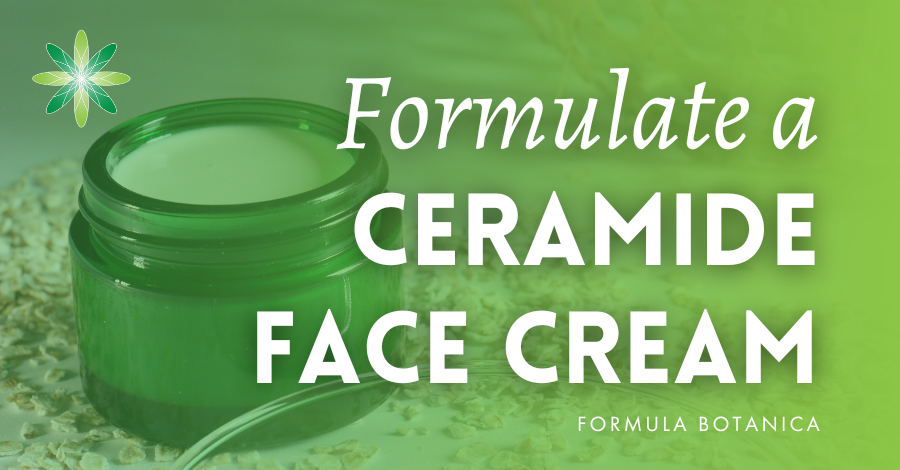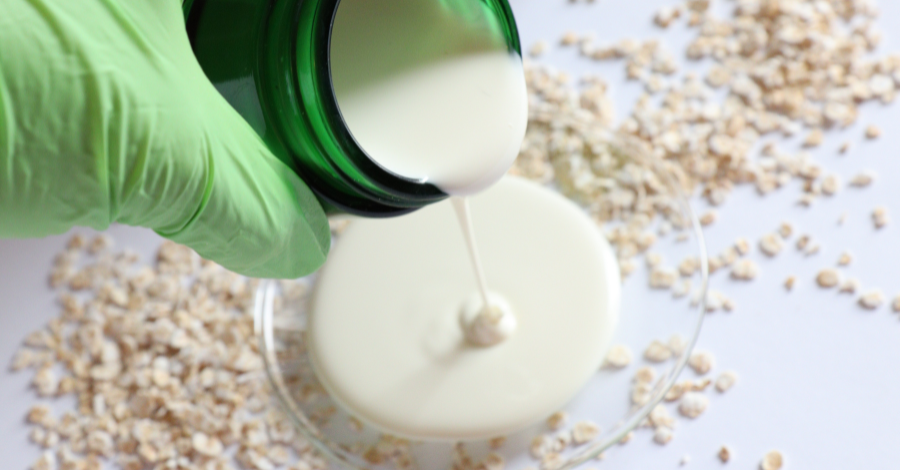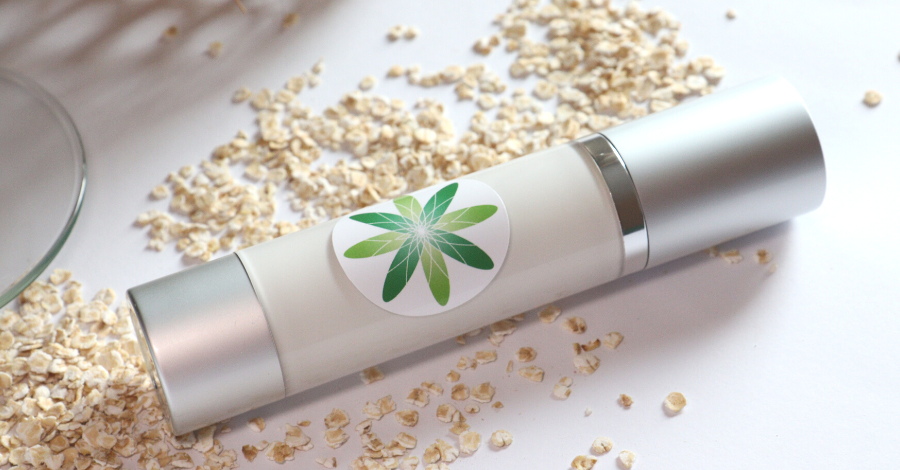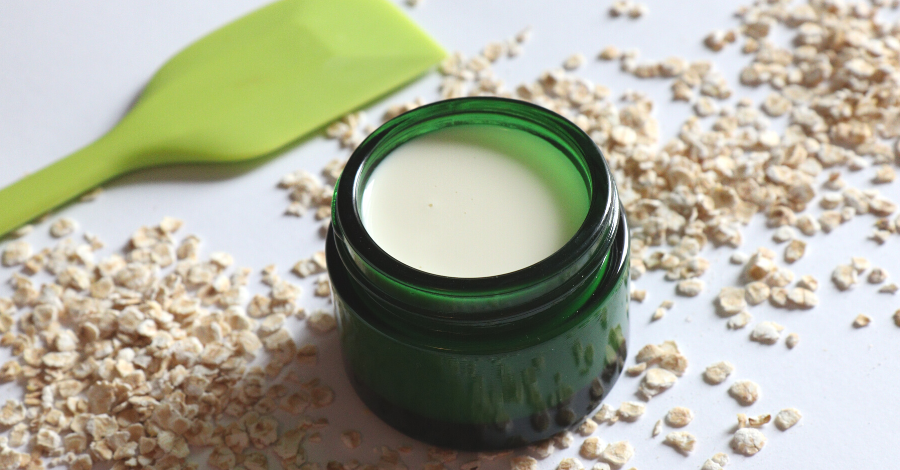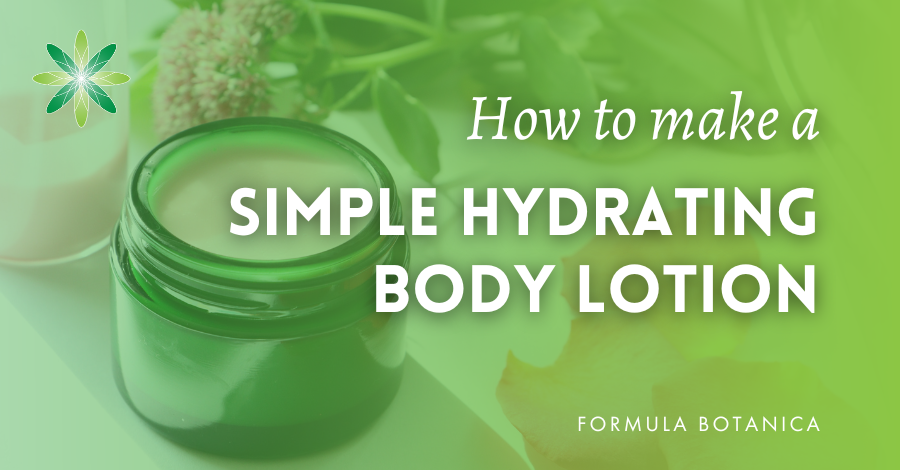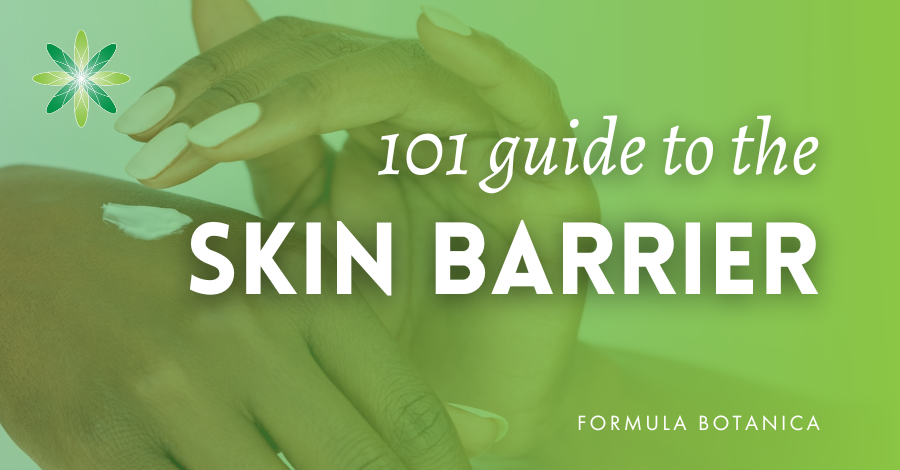Most of us will be familiar with mainstream face creams boasting “ceramides inside”. But, even if common in our skincare, ceramides might still be a mystery to you.
Here, we give you an introduction to the science of ceramides and their function in our skin and skincare. We discuss why they are such popular ingredients, as well as give you a formulation for a nourishing, ceramide face cream for skin barrier repair. The added advantage of this formulation is that it uses a cold-process emulsifier and so makes savings in terms of time and energy use.
If you enjoy formulating this ceramide face cream, you might like to explore other formulations which contain high-performance ingredients:
How to make a night cream with peptides
How to make a vitamin C antiageing hand cream
Formulate a bakuchiol beauty concentrate
Skin barrier function
It was recognised only in the last few decades that the stratum corneum – the uppermost layer of the skin – contributes directly to certain biological processes that keep the skin healthy. Its function is not only to protect, but also to detect and adapt to external factors (such as irritants, allergens, microbes or climatic changes).
We know now that this uppermost epidermal layer is not simply an amorphous mass of keratin fibres and some lipids. Its “dead cells” have an important function in managing biological roles, mainly thanks to their highly-organised structure.
Skin barrier function is defined by the lipids found in the stratum corneum extracellular space (also called the extracellular matrix). Over 50% of these lipids are composed of ceramides, but there are also fatty acids and cholesterol. Together, all three types of lipid create a critically-balanced molecular ratio.
If this becomes imbalanced, the barrier conformity becomes affected or even impaired. It is important to say that disruption of the skin’s acidic mantle leads to a reduction of lipid-processing enzymes that are involved in maintaining the proper lipid ratio.
Formulate this @FormulaBotanica cold-process ceramide face cream to nourish and help restore the skin barrier. Learn about the science of ceramides too. #ceramides #ceramidecream #organicskincare Share on X
Ceramides and the skin barrier
In the human skin (stratum corneum), there are nine subclasses of ceramides that have been identified, and they differ from each other with respect to their structural base. Ceramides numbers one and four have an exceptional molecular structure of linoleic acid linked to omega hydroxy fatty acid. Skin tissue levels of these two components is decreased significantly in skin conditions such as atopic dermatitis and are also strongly affected by ageing.
Therefore, skincare products that are able to replenish the “missing” lipids (e.g. ceramides) in the skin may be considered barrier repairing, mostly on account of their ability to restructure and improve the integrity of the stratum corneum barrier.
Natural and synthetic ceramides in skincare
Ceramides bear different names and can be synthesised or derived from different sources. Plant-derived ceramides can offer our skincare efficient and sustainable solutions to enhance the skin’s barrier. Rice, wheat and oats are the first choice of plants for ceramide extraction, but maize, soy, potato and konjac have been used effectively too.

Do you want to learn how to make organic skincare that works?
Our award-winning foundational natural skincare course teaches you how to formulate organic skincare products and launch the beauty brand of your dreams. Click Here
About our ceramide cream
Water-in-oil (W/O) emulsions are types of skincare products known for their extra moisturising and nourishing properties. W/O emulsions have been proven to also promote skin barrier regeneration processes, especially when they are formulated at the correct pH. By enriching the W/O cream with ceramides, we should be able to trigger restructuring and regenerative processes in the skin that will result in better integrity and function of the skin barrier.
Our formulation uses an advanced emulsifier that is designed to enable water-and-oil fusion by using patented technology. The emulsifier – PolyAquol™-VO4 – is completely natural and enables the creation of cold-process emulsions. The final product offers unique stability, and its texture gives it an amazing sensory profile.
Key ingredients
Emulsifier – we have chosen a specific emulsifier ideal for creating water-in-oil emulsions. It is important to follow all usage instructions for your chosen water-in-oil emulsifier.
Salt/Sodium chloride – this is a crucial stabilising element for W/O emulsions.
Precious plant oils – we have selected specific oils as emollients that contain a unique combination of fatty acids to help nourish the skin. Plum seed oil is a delicate oil obtained from the kernel of plums and is a valuable source of omega fatty acids and phytosterols. Cranberry seed oil contains essential fatty acids as well as phospholipids and phytosterols. Pomegranate seed oil contains essential fatty acids and is rich in polyphenols that provide excellent antioxidant and regenerative properties.
AvenaPlex – this is a proprietary lipid complex obtained by ethanol extraction from oat kernels. This extract is rich in natural sterols, ceramides and fatty acids. It contains active compounds that help restore the integrity of the skin barrier.
Our Formulation: ceramide face cream for barrier repair
Makes: recommended trial batch size: 50g / 100g.
Formulation: a cold-process W/O emulsion.
Time taken: 20 minutes.
Level: intermediate-level formulation to personalise and adapt.
| Phase | Ingredients | INCI | Weight (g) |
| A | Distilled water | Aqua | 67.80 |
| A | Glycerine | Glycerin | 4.00 |
| A | Sodium chloride | Sodium chloride | 1.00 |
| B | PolyAquol™-VO4 | Polyglycerol-4 oleate (and) Polyglycerol-6 oleate (and) Polyhydroxystearic acid | 3.50 |
| B | Caprylic capric triglycerides | Caprylic capric triglycerides | 10.00 |
| B | Plum kernel oil | Prunus domestica kernel oil | 5.00 |
| B | Cranberry seed oil | Vaccinium macrocarpon seed oil | 3.00 |
| B | Pomegranate seed oil | Punica granatum seed oil | 3.00 |
| C | Vitamin E | Tocopherol | 0.60 |
| C | Avena Plex Active lipid complex |
Avena sativa kernel extract | 1.00 |
| D | Jasmine absolute | Jasminum sambac absolute | 0.10 |
| E | Geogard 221 | Dehydroacetic acid and benzyl alcohol | 1.00 |
| Total: 100.00 |
Equipment:
- Scales
- Homogeniser
- Stirrer
- pH meter
- Glass beakers, glass rods and some spatulas
- Pipettes
- Suitable container
Method of Manufacture
- Preparation
Sanitise your utensils and work area, and wear appropriate PPE according to GMP.
- Weighing phase
Prepare and weigh out all ingredients for phases A, B, C, D and E.
- Phase A
Make a mixture of phase A and leave it at room temperature (25°C), then check the pH. If necessary, adjust to 5-5.5 with a suitable pH adjuster.
- Phase B
Make a mixture of phase B and leave it at room temperature.
- Blend Phases A + B
Slowly pour phase A into phase B and mix well, homogenising until smooth and uniform (3-5 minutes for a 100g batch size).
- Phases C, D and E
Add phases C, D, and E ingredients one by one, stirring them in gently and thoroughly.
- Decant
Decant into a suitable container and label it with the batch name and date.
Formulation notes
- You are welcome to substitute ingredients in this ceramide face cream. If you can’t source our chosen ceramide extract, see our suggested suppliers below as several stock other ceramide options. However, keep in mind that a change of ingredient in the formula may give you different results. You can experiment with different types of water-in-oil (W/O) emulsifiers or different plant oils. Always follow the supplier’s recommendations and usage instructions for any ingredient you opt for.
- For improving stability, magnesium sulfate is also recommended for use.
- Even if the formula is cold-processed, always make sure both phases are at a similar temperature. Gently heating both the water and oil phases (up to 30°C) can help with further processing/mixing.
- The step in which you pour the water phase into the pre-mixed oils is very important. Do not rush it. With each addition of water, wait until the water is completely mixed into the oils before proceeding.
Suggested suppliers
Many of the suppliers below ship internationally. We have given their home country base.
Aromazone (EU).
Aromantic (UK)
Alexmo Cosmetics (EU) – offers our chosen W/O emulsifier PolyAquol™-VO4.
Manske (EU)
Soap Kitchen (UK)
Elemental (EU)
Lotioncrafter (USA)
Essential Wholesale (USA)
Go Native (New Zealand)
Naturally Balmy (UK)
Soap & More (Canada)
References and further reading
Tessema E.N. et al. Skin Pharmacol Physiol 2017. Potential Applications of Phyto-Derived Ceramides in Improving Epidermal Barrier Function.
Uchida Y, et al. Am J Clin Dermatol. 2021 Nov. Ceramides in Skin Health and Disease: An Update.
Coderch L, et al. Am J Clin Dermatol. 2003. Ceramides and skin function.
Uchida Y. Biochim Biophys Acta. 2014. Ceramide signalling in mammalian epidermis.
Leave us a comment

Miroslava is a former grading tutor at Formula Botanica. She has a Ph.D in neuroscience, expertise in biology and chemistry, and a lifelong passion for natural cosmetic formulation.

